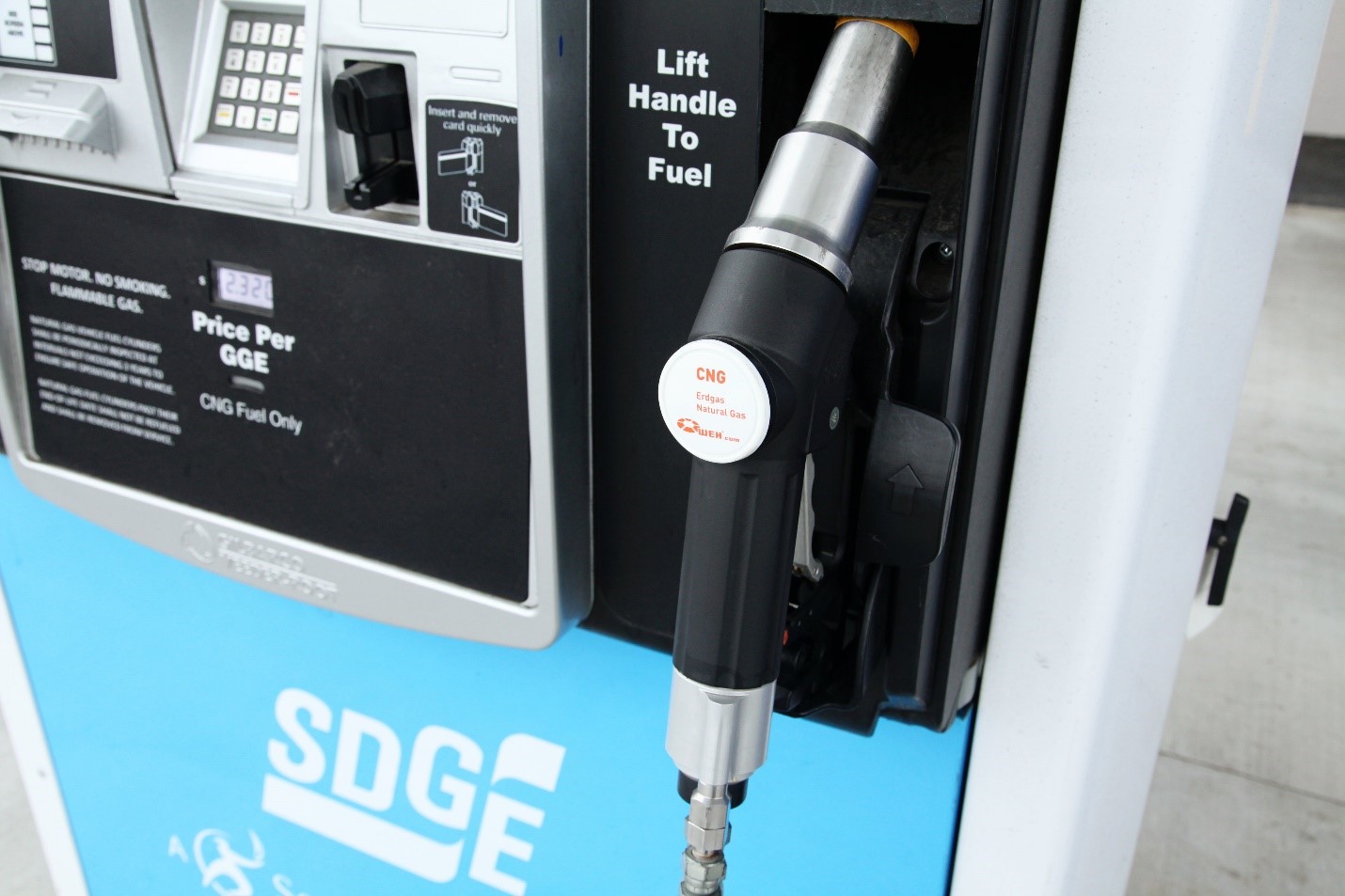The price of compressed natural gas at six San Diego-area clean vehicle fueling stations will drop by $0.26 per gallon starting Monday.
Through a California Public Utilities Commission approved program, SDG&E can offer lower prices for compressed natural gas by returning revenue generated from the sale of Low Carbon Fuel Standard (LCFS) credits.
The LCFS program is administered by the California Air Resources Board and seeks to reduce greenhouse gas emissions from transportation fuels by 20 percent by 2030. Under the program, fuels that help lower GHG emissions, such as natural gas, generate LCFS credits.
Cleaner and More Affordable Fuel
Natural gas helps reduce smog and brings down per gallon fuel costs compared to gasoline or diesel.
The average pump price at utility compressed natural gas stations was $2.37 per gallon in February, whereas the average cost of gasoline in California was $3.24 per gallon, and the average cost of diesel was $3.73 per gallon, according to the Energy Information Administration.
Lowering the cost of compressed natural gas benefits trucking fleets, public buses, garbage trucks, taxis and other transportation vehicles that use compressed natural gas instead of diesel or gasoline to run. The latest heavy-duty natural gas engines can cut smog-forming emissions by more than 90 percent compared to the cleanest heavy-duty diesel trucks on the road today.
Powered by Renewable Natural Gas
Helping to further improve air quality, renewable natural gas, a fuel produced from organic waste sources, will soon begin flowing at three SDG&E compressed natural gas stations in Miramar, Kearny Mesa and Carlsbad, as well as at three private stations.
Renewable natural gas is produced from the methane generated in landfills, wastewater treatment plants, food processing, and dairies. It can be used to fuel trucks and buses, generate electricity, heat homes and businesses and cook.
Capturing the methane from these waste sources and using it for fuel has two benefits: it keeps methane, a greenhouse gas (GHG), from entering the atmosphere and contributing to climate change, and it reduces the use of traditionally-sourced natural gas.
Renewable natural gas is a valuable tool for reducing pollution associated with California’s transportation sector, which accounts for 41 percent of GHG statewide and about 50 percent of GHG emissions in our region.
###


